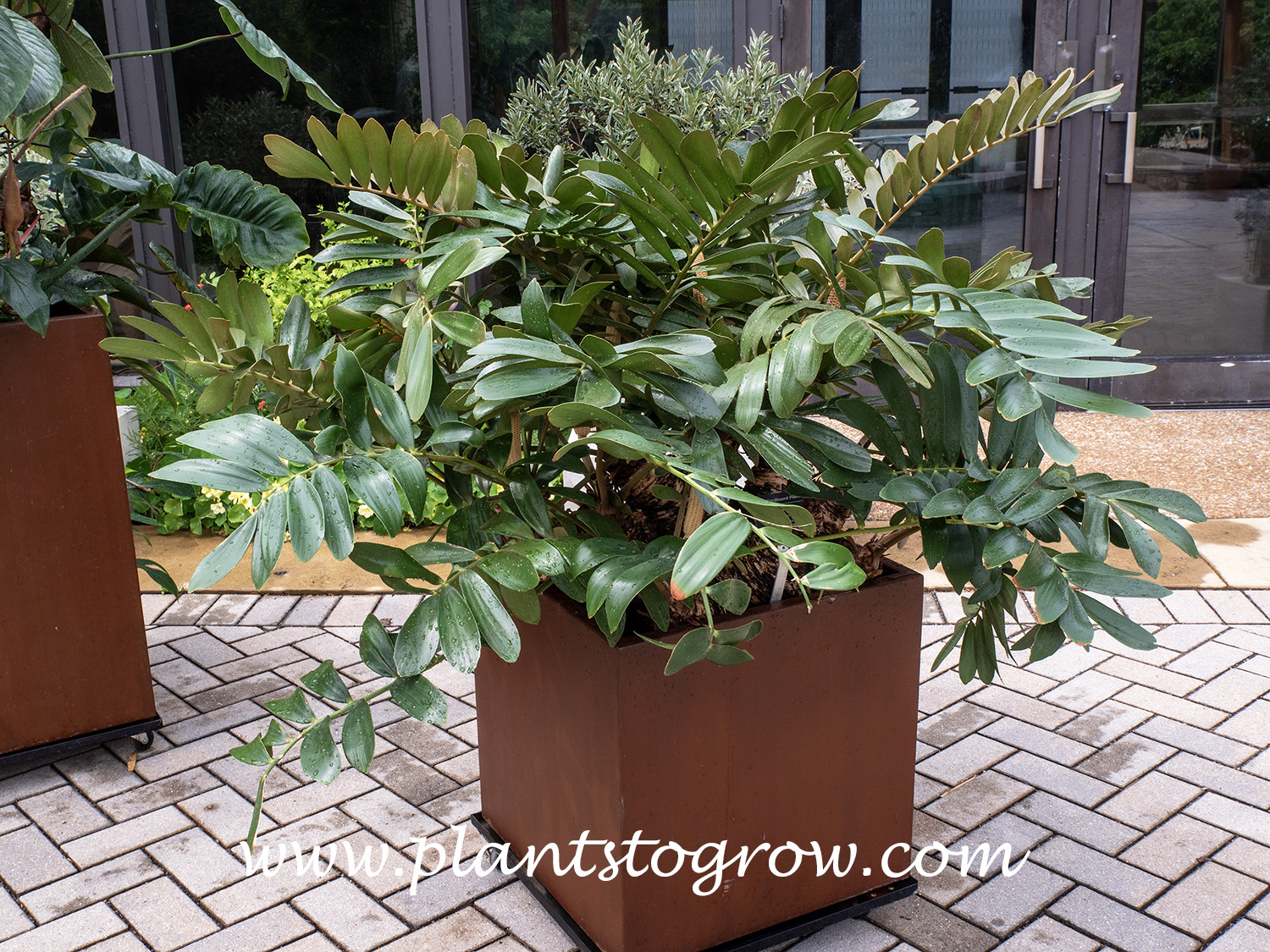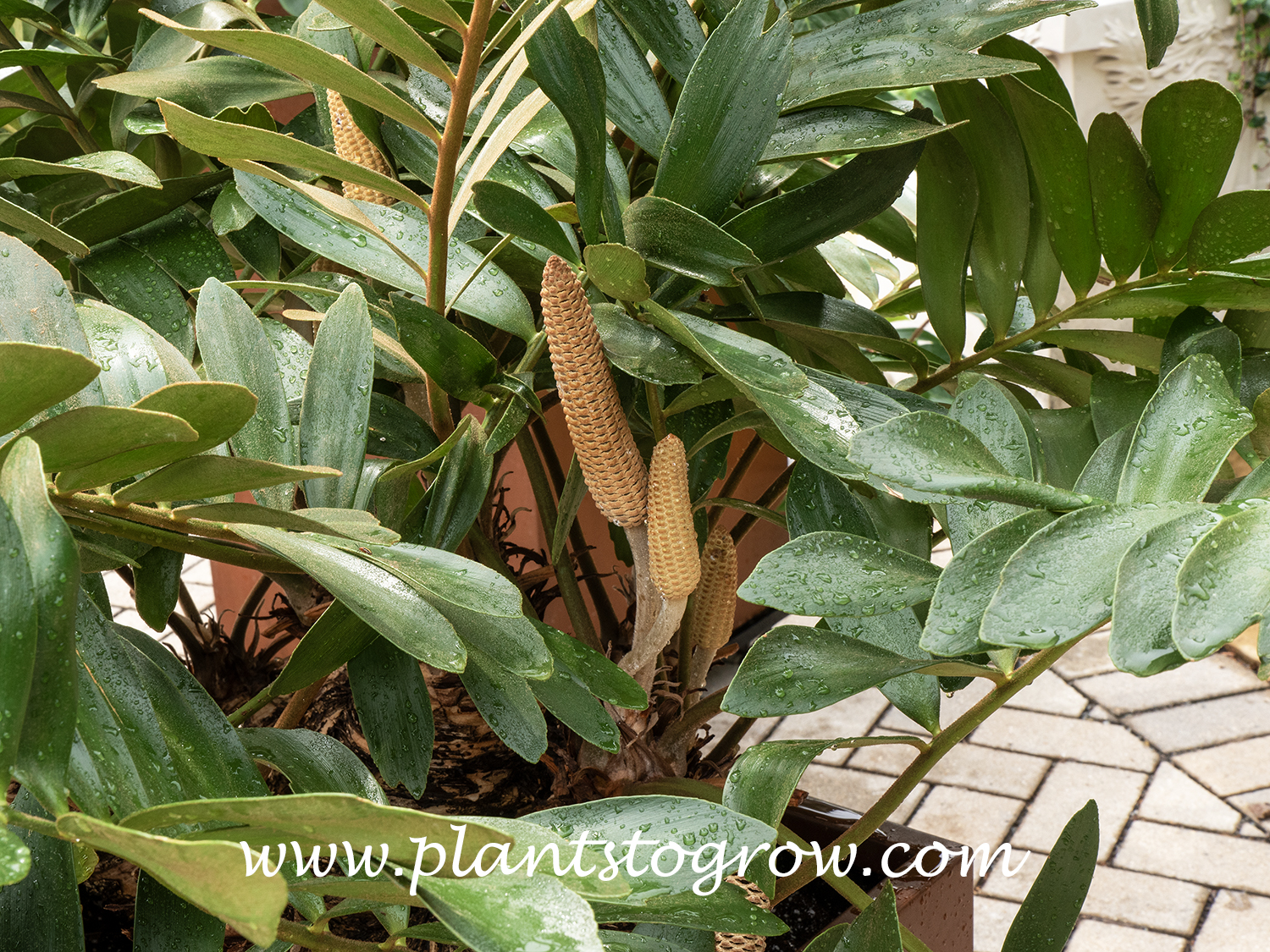| Description | Cardboard Plant (Zamia furfuracea) The leaves have a rigid cardboard texture, hence the common name. It can be used as a landscape plant in zone 9 or warmer or as an indoor plant in colder climates. It has a moderate toxicity rating. |
|---|---|
| Pronunciation | (ZAM-ee-uh)(fur-fur-AH-see-ah( |
| Plant Type | Indoor Foliage, Perennial Tender |
| Hardiness Zone | 9-11 |
| Sunlight | full, mostly sunny, some shade |
| Moisture | average, dry, drought tolerant |
| Soil & Site | sandy, coarse, well-draining |
| Flowers | It is a gymnosperm, so it doesn't produce a true flower. |
| Fruit | Female plants form cones requiring pollen from male plants' cones to be fertilized. Bright orange, fleshy seeds mature on the fertilized female cones. There are male and female plants, which are called dioecious. Seeds are toxic |
| Leaves | Large cardboard textured pinnately compound leaves radiate from the center and are slightly arching. Leaves are covered with a rusty brown hair |
| Stems | Short, stout stems in the center of the plant. |
| Dimensions | 2-5 by 5-8 feet (HS) |
| Maintenance | low |
| Propagation | seeds, division |
| Native Site | Mexico |
| Misc Facts | The genus name derives from zamia, which somewhat refers to pine cones. The epithet furfuracea means scruffy or mealy, referring to the leaflets' surface texture. |
| Notes & Reference | #144-Missouri Botanical Gardens website (www.missouribotanicalgarden.org), #275-North Carolina Botanical Garden (https://floraquest.org/plant/) |

Cart



